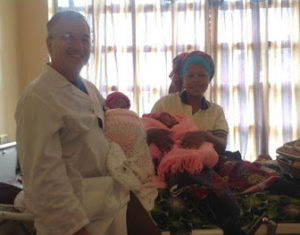Success Stories
Mission Doctors Association’s goal has always been to work ourselves out of a job in the locations where we work. Ideally, this means that the local healthcare professionals have been trained and no longer need us. We are delighted to have been successful in this mission in a number of locations.
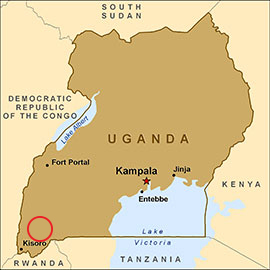
Uganda
GOAL: Improve patient care and train local health professionalsWhen Dr. Bill Walsh and his wife Kate arrived at Karoli Lwanga Hospital in Uganda, they were the first to serve from Mission Doctors Association. Bill, a surgeon and Kate, a nurse, began at the 240 bed rural hospital in 2015. They found that so many of the patients were not being treated for critical illnesses and injuries.
As the only surgeon, Bill quickly recognized that while there were many needs, the two actions that could have the greatest impact would be the addition of an Emergency Room and training for staff to help them prioritize those most in need of treatment.
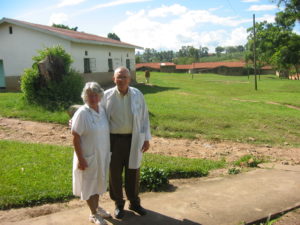
In planning with the Hospital Administration, Mission Doctors began to create something completely unique in rural Uganda: an Emergency Room.
Bill began working with the local doctors and the nurses and noted that with a group of nurses dedicated to this work, they were able to learn and implement what they had learned more quickly.
Upon completing his residency, Dr. Bisanzo returned many times and continues to return with other short-term Mission Doctors, and has worked to create a program for training nurses in triage, bringing other Emergency Room doctors to join in the work.
The outcome quickly revealed the tremendous difference that Bill knew an Emergency Room would make when the staff had the opportunity to be trained and succeed!
See the video of the celebration of the opening of the Emergency Room: https://www.youtube.com/watch?v=DtInEChlimE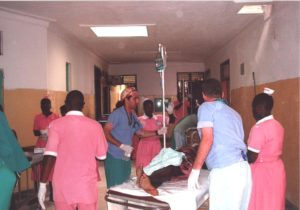
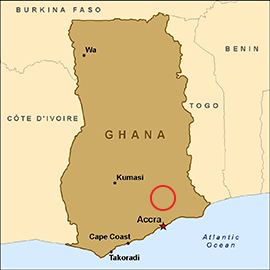
Ghana
GOAL: Improve patient care by building an eye clinicIt is not only Family Practice doctors who are needed in the missions. Specialists are needed at mission hospitals as well. Yet with many specialties, the requisite equipment and supplies make it impossible for an orthopedist, cardiologist, or ophthalmologist to utilize all their skills.
In 1997, when Mission Doctor Dr. Jim Guzek arrived in Ghana with his wife and three-year-old son, James – they went with the ambitious intent of opening an eye clinic at the Margaret Marquart Catholic Hospital. An ophthalmologist is a medical and surgical specialist that deals specifically with the structure, function, diseases, and treatment of the eye.
This left only the most vital equipment for them to take with them. Their departure from LAX was quite the scene with boxes and bags. The family of three headed out to West Africa where they would make a lasting difference. When they arrived in the Diocese of Ho, they got to work.
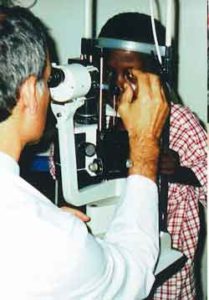
Jim’s story is one that truly exemplifies sustainability. Over the four years, Jim and Roberta served in Ghana as members of Mission Doctors Association. Not only did they see countless patients and perform countless surgeries on young and old alike, but they also participated in the training of 10 ophthalmologists and 10 eye nurses. However, it didn’t end there. The hospital continues to operate, although not as a teaching facility, nearly 20 years since the Guzeks left. Their work has been multiplied over and over again, and expectations have been more than met.
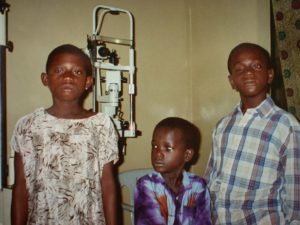

Guatemala
GOAL: Improve patient care and train local health professionals The best type of departure a Mission Doctor can make when leaving a mission hospital, is the one when they are no longer needed! This is what happened when Dr. Brent Burket and Dr. Jennifer Thoene left Guatemala.In 2007, they arrived in Lake Attilan, with their four young children, and in 2010 when they left, there was no longer a need for long-term mission doctors.
Hospitalito, Lake Atitlan was originally founded by Blessed Stanley Rother, a priest from Oklahoma, who was martyred in Guatemala in 1981. The original hospital he helped build was destroyed by torrential rains in the wake of Hurricane Stan in 2005, that brought devastating mudslides, taking the lives of as many as 1,400 and displacing 5,000 people. Within two weeks after the October mudslides, doctors reopened a temporary hospital in a building that had been a backpacker’s hostel on the other side of the town, on the shores of Lake Atitlan. This is the Hospital where Brent and Jennifer began serving only two years later, but work had already begun on a more permanent home.
When Brent and Jennifer left in 2010, they were really no longer needed here. They left with the gratitude of the people, knowing that the local healthcare community was ready to work without long-term doctors from MDA.
Brent and Jennifer, however, did not return to begin working in the United States. Feeling that God was still calling their family to serve, they returned to visit family for a bit, then headed out to answer God’s call to care for the poor in rural Cameroon, West Africa for another three years! When they left Cameroon three years later, they passed the baton to Mission Doctor, Martha Franz, the second best way to leave!
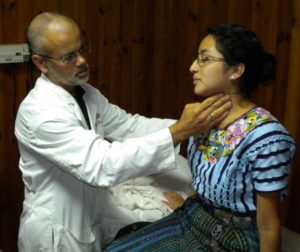
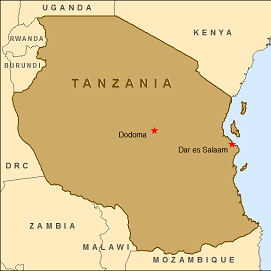
Tanzania
GOAL: Development of Bwambo Health Center, train local health professionals, improve patient care There is nothing better for a mission site than consistency. In 2009, Mark and Molly Druffner and their seven children arrived in Bwambo, a small village in rural Tanzania, expectant to see what God had planned for them.Nine years later, they still return to the site every summer, and that regularity has made a remarkable impact. They have transformed the site: they’ve improved patient care, improved doctor housing and the church facilities, and they’ve raised enough money for the hospital to have its own ambulance. The hospital now can better accommodate volunteers, who then go on to take care of more patients.
Simply put, the Druffners have brought care to people who have no other care in the remote area.
The Druffners were the recipient of our 2018 Msgr. Anthony Brouwers Award for this work.
